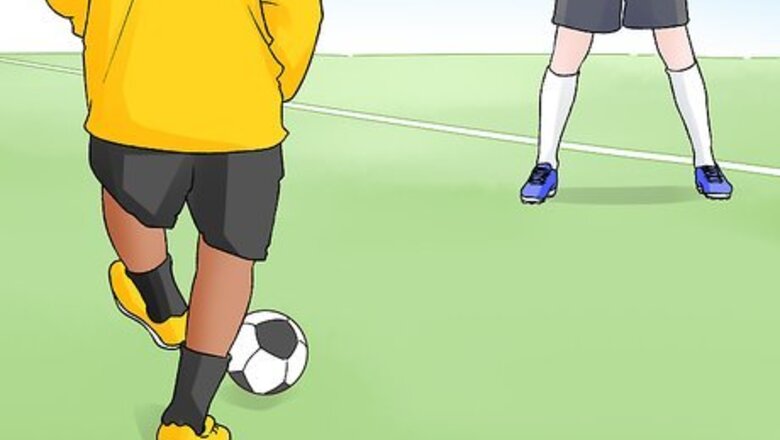
views
X
Expert Source
Bernat FranquesaLicensed Soccer Coach & Head of Methodology at APFC
Expert Interview. 3 March 2020.
There are a few different types of passes that can help get you out of tricky situations. Grab a friend and start by learning the push pass. Then you can work your way up to the harder moves like the lofted, chipped, and one-two passes.
Learning the Push Pass

Use a push pass for a short, direct pass. The push pass is the easiest one to kick, so start by learning this one. The push pass is also the easiest to intercept. Make sure that your teammate doesn’t have someone hovering nearby ready to steal the ball. The push pass is also known as the direct pass or the forward pass.
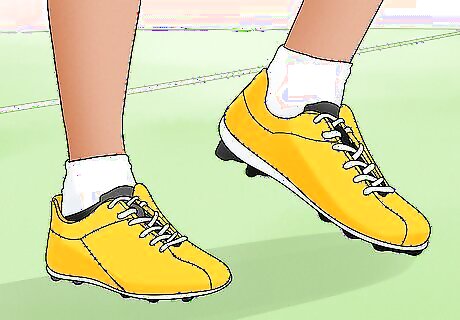
Place your plant foot even with the ball. Position your plant foot so it faces your target. The plant foot is the one that will not be kicking and helps keep you steady. Eventually you can practice kicking with each foot to become a balanced player, but for the first time, use whichever foot you are more comfortable with.
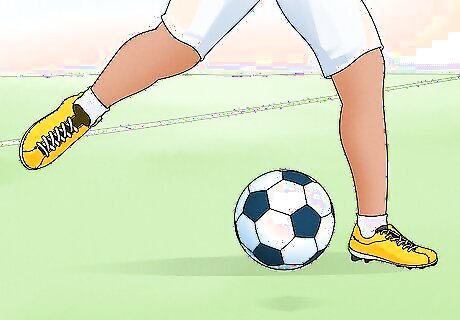
Keep your kicking ankle firm and your body over the ball. Keep your ankle firm, not floppy, during the kicking and follow-through to protect yourself from injury. Hold the toes of your kicking foot slightly higher than the heels. Position your body so it's facing the person you are kicking toward. It may help to imagine a line going from your belly button to your target.
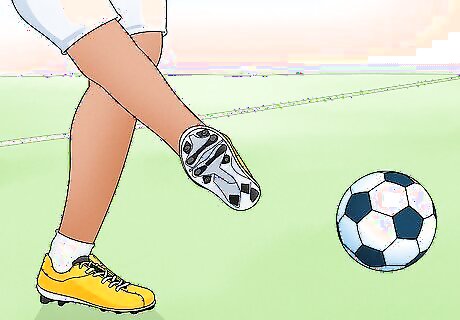
Kick using the inside of your foot. Don’t kick using the laces, heel, or outside of the foot when you are first learning. Kick at right angles to the ball at the midline of the ball. Kicking at the middle of the ball helps keep it on the ground. It can be hard to stay balanced when you are standing on one foot, so try putting your arms out.
Kicking a Lofted Pass

Use a lofted pass if you need to get the ball over your opponents’ heads. If your opponents are closing in on you, and there is no one you can directly pass the ball to, the lofted pass is a great move. It’s more advanced than the push pass, but with practice, you can nail it.
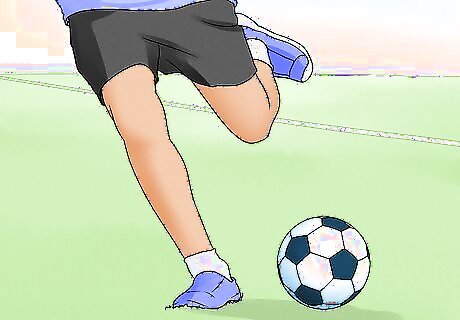
Put your plant foot out wide and approach at a 15-degree angle. Like a push pass, point your plant foot in the direction of the kick, but place it about 6 inches (15 cm) behind and 9 inches (23 cm) outside of the ball.

Kick the bottom of the ball with the front of your foot. Use the front of your foot at about the area where the knuckle of your big toe is. Raise your foot behind you and keep your body leaned back as you kick the ball. When you make contact with the ball, keep your ankle firm on the bottom half of the ball. This will scoop the ball up and into the air. Start by practicing at a low speed, and work your way up to faster lofted passes.
Mastering the Chip Pass

Use the chip pass if you have many defenders around you and your teammate is close. The chipped pass will go a short distance, but it will fly through the air like a lofted pass. It has more backspin than a lofted pass, so it’s going to stay in the air longer. Make sure you practice chipping on grass because your foot might ram into the ground.

Run up to the ball at about 45 degrees and plant your foot. Put your plant foot about 6 inches (15 cm) behind and 9 inches (23 cm) outside of the ball. Point your kicking foot away from you. Raise your backswing by lifting your foot behind you. The shorter the backswing, the more control you will have over the ball.
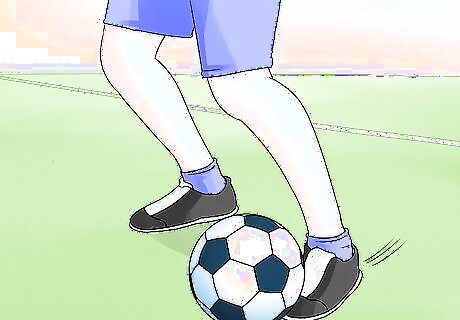
Kick the ball as low as possible with your instep. Use your foot to form a wedge that slides under the ball. Kick with a stabbing motion to send the ball flying up in the air. Try to use enough backspin to keep it from going too far. Lean back as you kick and follow through slightly to make the ball go higher. Don’t lean too far though––you don’t want to fall! Another form of chipping involves kicking with your toes.
Passing the One-Two

Choose the one-two if you need to get around a single defender. For example, if you are approaching the goal and there is one last defender right in your way, you can use the one-two to send the ball in a triangle around your opponent.

Push pass the ball to your teammate. Use the inside of your foot to pass the ball directly toward your teammate’s feet. If you don’t know how to do the push pass, learn that one first, because the one-two is a more complex move.
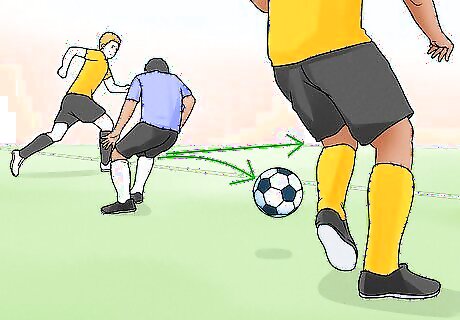
Sprint past your opponent immediately after you kick. Make sure to end up in an open space, because your teammate will pass the ball right back to you. This kind of pass is also called a wall pass because it’s similar to bouncing the ball off a wall. Create a signal you can use with your teammate to indicate that you are attempting the one-two pass.
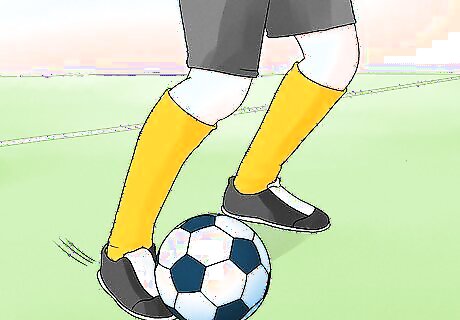
Receive the ball and pass again or dribble. You’ll have to act quickly to receive the ball as your teammate passes it back. This move requires a lot of practice, so don’t worry if you don’t get it the first couple of times! Now that you have the ball again and are further up the field, determine whether it's best to dribble, pass, or try to score.













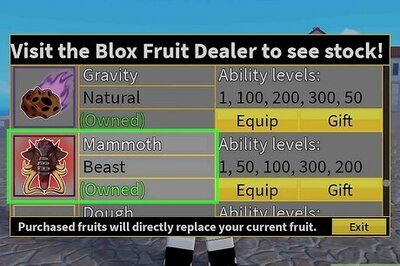

Comments
0 comment